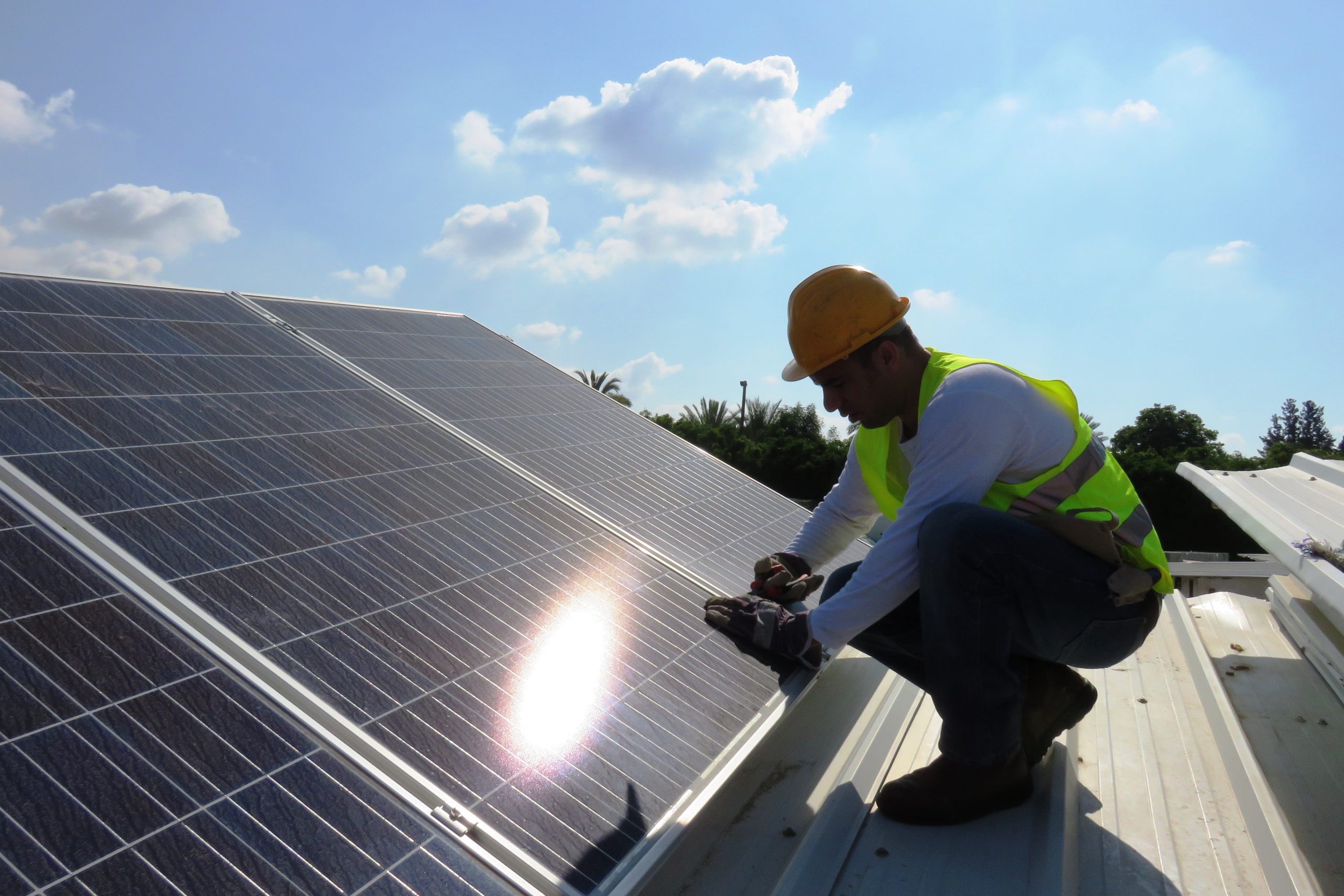Key battleground seats to be contested in this year’s General Election are three times more likely to be hotspots in Britain’s switch to Net Zero, researchers from the CBI’s economic unit have found.
Sectors of Britain’s output anchored in low carbon technologies grew 9% last year, contrasting with stagnation in the wider economy, where GDP growth limped to a meagre 0.1% .
The figures come from a study out today from the academics at authoritative Energy and Climate Intelligence Unit (ECIU). Analysis came from CBI Economics and The Data City consultancy.
The total gross value added (GVA) by UK businesses involved in Net Zero activities now stands at £74 billion, the report finds.
But CBI Economics is warning that without further investment and policy stability, the strength of future growth is in jeopardy as the US and EU compete to attract and develop clean industries.
The analysis found that jobs in the net zero economy are highly productive, generating £114,300 in economic activity, more than one and a half times the UK average of £72,550. They are also better paid by almost £10,000, the average net zero salary being £44,600 compared to the £35,400 UK average.
Scotland, Wales and the Midlands have particularly strong net zero economies. London in contrast has the lowest proportion of its economy based on businesses in green sectors.
Battleground constituency seats in England and Wales (based on new boundaries) are three times more likely to be a Net Zero economic ‘hotspot’ These seats include: High Peak in Derbyshire , Stroud, home of Dale Vince’s Ecotricity, Cheadle, Derby North, Lancaster and Wyre, Broxtowe and Hazel Grove.
Some areas with particularly high concentrations of net zero activity are however among Britain’s most deprived. Hartlepool, Nottingham, Redcar and Cleveland are among the top 10% local authorities for income deprivation in England.
In addition, around two in three (65%) of the top 25 net zero hotspots and half of the top 50 net zero hotspots in England and Wales are classified as key electoral battlegrounds heading into the general election.
CBI chief economist Louise Hellem said: “The UK’s transition to net zero brings immense opportunities for our economy. Our report, together with the Energy and Climate Intelligence Unit, highlights how businesses are already seizing those prizes – creating jobs and attracting investment, whilst boosting our energy resilience. But we also know that there’s much work to be done to fulfil the UK’s potential, and accelerate our journey to net zero.
“Businesses continue to face difficult headwinds this year, leading many to pull back on investment plans. Where firms can invest, they want to see greater clarity on a long-term plan for our energy transition – or we risk failure to reach our net zero targets and missing out on sustainable, productivity-led growth.
“It’s clear that action is required to grow our net zero economy. In the CBI’s Spring Budget submission, we call on the Chancellor to establish a Net Zero Investment Plan – to identify green investment gaps and implement policy aimed at crowding in private finance. That’s one of many levers the Government can pull to support businesses in doubling down on green growth – but there are many more. We hope this report kickstarts a wider conversation about how the UK can realise those opportunities.”
Energy and Climate Intelligence Unit director Peter Chalkley said: “Against the backdrop of economic stagnation, the net zero economy is bucking the trend, but it’s clear that the policy U-turns of the past year have damaged investor confidence at a time when the US and EU are investing billions to compete for clean industries.
“Thousands of jobs depend on net zero in constituencies right across the country, including many key battleground seats, Chalkley observed.
“The question now is, will political parties provide the leadership, stability and investment needed to generate further growth or shy away from the global race for net zero.”
The analysis found that net zero businesses had received £279 million of public InnovateUK funding and £12.3 billion of private investment during 2021-2022.
2022 saw £1.5 billion invested in the low emissions vehicle sector, more than for example, the biopharmaceutical sector’s £1.4bn. That didn’t stop the UK falling in the EY clean energy attractiveness index in the past year.
Key Net Zero sectors include renewable energy, energy storage, green finance and recycling.
From cleantech startup Heatio, Thomas Farquhar said: “SME’s will be the driving force behind the Net Zero economy, and already account for 61% of private sector employment.
“However, for this growth to materialise, it is imperative that Government provide policy consistency and unwavering ambition.
“Frustratingly, we are lagging behind the rest of Europe in the transition to cheaper, more secure and cleaner energy in homes. Countries like Norway have already transitioned 66% of their homes to low carbon heating, Sweden 43% and Finland 41% whereas the UK has less than 1%.
“When it comes to solar the UK has uptake of 5% of suitable homes. That’s behind the likes of Italy at 23%, the Netherlands 16%, Germany 11% and further afield Australia with 31%. The numbers are startling.”
Full ECIU/CBI Economics report is here.
Table 1: Top 25 constituency hotspots for Net Zero in England & Wales (GVA)
| Parliamentary Constituencies (revised boundaries) | GVA | ||
| Name | Rank (by proportion) | Proportion of local economy | Absolute Value (£m) |
| Stockport | 1 | 15.9% | 375 |
| Cheadle | 2 | 15.9% | 363 |
| Hazel Grove | 3 | 15.9% | 363 |
| Hinckley and Bosworth | 4 | 12.0% | 258 |
| Havant | 5 | 11.1% | 225 |
| Warwick and Leamington | 6 | 10.1% | 465 |
| Gloucester | 7 | 9.5% | 272 |
| Hartlepool | 8 | 9.4% | 133 |
| Derby South | 9 | 9.0% | 289 |
| Derby North | 10 | 9.0% | 263 |
| Mid Leicestershire | 11 | 8.8% | 242 |
| South Leicestershire | 12 | 8.6% | 250 |
| North West Leicestershire | 13 | 8.5% | 297 |
| Lancaster and Wyre | 14 | 8.3% | 135 |
| Nuneaton | 15 | 7.8% | 150 |
| Mid and South Pembrokeshire | 16 | 7.7% | 162 |
| Taunton and Wellington | 17 | 7.7% | 178 |
| Morecambe and Lunesdale | 18 | 7.6% | 165 |
| Ashfield | 19 | 7.5% | 153 |
| Broxtowe | 20 | 7.3% | 123 |
| Nottingham North and Kimberley | 21 | 7.2% | 244 |
| Nottingham East | 22 | 7.2% | 265 |
| Nottingham South | 23 | 7.2% | 253 |
| Stroud | 24 | 7.0% | 160 |
| Selby | 25 | 6.7% | 182 |




